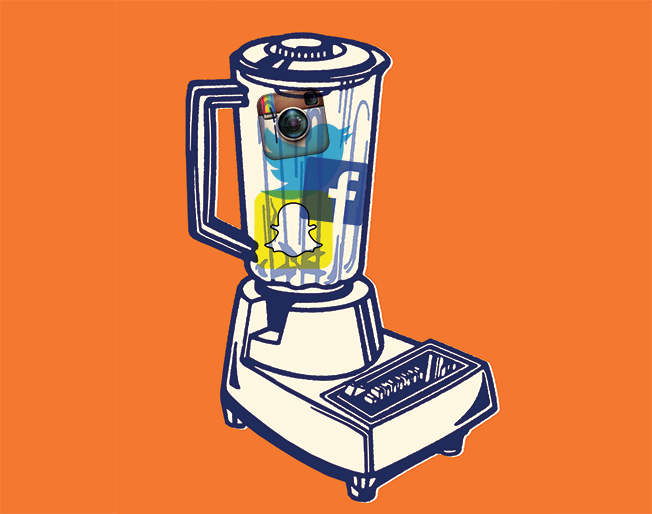One of my favorite debates in digital marketing goes like this: When will email be replaced by (fill in the blank)? Or when will brands stop using SMS? Even the Internet is challenged: When will apps or Facebook kill the Web?

Scott McCorkle
Rather than defend any individual digital marketing channel, I want to highlight this important fact: So far, nothing has replaced anything in digital marketing. Instead, we've seen a layering of new digital channels on top of existing channels, which creates a rich tapestry of ways to connect with customers. The Internet of Things adds even more options for customer-to-brand interactions, and the most popular connected devices like FitBit use email and mobile notifications to reach users.
It's striking how new channels typically build upon others instead of tearing them down. Here are five examples of this layering in action.
1. Amazon hasn't killed the retail store.
Retailers have long been concerned about online stores' hassle-free shopping and wide inventory. As the largest online retailer, Amazon is often seen as the biggest competitor.
But instead of wiping out retail, online stores' personalized product review and digital marketing programs are actually driving people to physical stores. Showrooming—trying on or testing items in retail stores with the intent to purchase online—didn't signal brick-and-mortar's decline. Instead, reverse showrooming (researching items online on sites like Amazon to purchase in-store) is actually more common than showrooming in the U.S., where 69 percent of people reverse-showroom while 46 percent showroom.
2. Digital hasn't killed print.
Magazines, handwritten letters and direct mail ads aren't museum pieces; they're still part of everyday life. Print hasn't disappeared from marketing strategies, either. Instead, print marketing is evolving from spray and pray to on-demand and one-to-one.
In fact, some of our largest customers have requested a way to integrate their print and digital channels using our platform. They wanted to send customers triggered, unique print messages as part of an overall customer journey. The average journey merges both physical and digital components, so to entirely ignore the print side is a marketing mistake. We've added on-demand print to the Marketing Cloud so customers can receive physically printed materials alongside email, social and in-app content.
3. Mobile messaging hasn't killed email.
LINE, WeChat, WhatsApp and their contemporaries keep people in touch, no matter where they are in the world. With a wireless connection and a smartphone, colleagues and loved ones can connect in real time, with no roaming charges in sight. That immediacy and mobility has led some to foretell the death of email at the hands of messaging.
Yet email remains the top channel for the majority of in-office dealings and brand-to-customer communications, and plenty of personal conversations, too. Mobile has actually reinvigorated—not obliterated—email, with 53 percent of emails now opened on mobile devices.
4. Instagram and Snapchat haven't killed Facebook.
If there's one thing modern marketers love, it's data. We have access to more data than ever, but we must be cautious about the conclusions we draw from it. I've seen study after study surveying consumers on their channel preference, and many of these studies proclaim that young adults and teens prefer Instagram and Snapchat to Facebook. In reality, Facebook is growing. This past August, for the first time, 1 billion people used Facebook in a single day. That was no accident as Facebook regularly innovates with new features to keep users coming back, like live video for public figures and auto-play video. Instagram and Snapchat are growing, too, but Facebook's growth globally and among older users is nothing to sneeze at.
5. Ad blocking won't kill great advertising.
Apple's iOS 9 introduced a new ad-free environment for iPhones, but ad blocking is an old-school service. Think back to the pop-up blockers you likely installed on an old PC. While ad blockers are indeed becoming more popular and sophisticated, new ad platforms are also driving innovation for both customers and marketers. These new ads are emotional and entertaining storytelling vehicles, just like the best ads always have been. Add in the possibilities for super-targeted personalization and you can appreciate why the future of online advertising is bright.
Instagram's video and photo ads are becoming more popular, as it encourages brands to make sure they are fresh, befitting the platform and not recycled banner ads. Ad blocking increasingly looks like the end of the Web cookie-based ad targeting era and a move into more personalized "in the feed" ads, which yield better results for marketers and are more engaging for customers. In this complex world of customer communication, channels rarely die. It's my mantra that a marketer's goal should be marketing so good it's customer service, and customer service so good it's marketing. Echoes the Harvard Business Review: "The new frontier of marketing will be service, not sales." Today's marketers are fortunate that they have more channels at their disposal to serve customers than ever before.
Above all, marketers must create an integrated experience for their customers. Achieving that integrated experience will require every digital and physical channel, and allowing your customers to pick which they prefer.
That means you'll probably need to include some of the channels that people said would be dead by now. I hope you didn't bury them.
An email marketing evangelist and digital marketing pioneer, Scott McCorkle is CEO of Marketing Cloud, Salesforce, based in Indianapolis. Follow him on Twitter: @smccorkle.
This story first appeared in the March 21 issue of Adweek magazine. Click here to subscribe.








